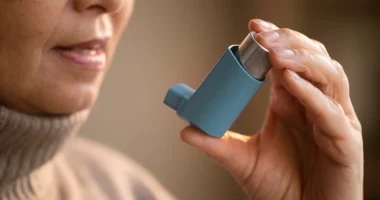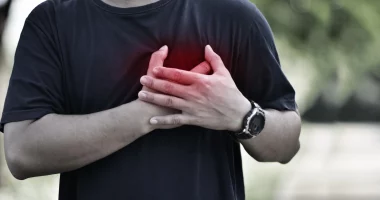Bunions are a sign of a gradually worsening bone problem. They show up as a hard lump at the bottom of the big toe.
The medical term for bunions is known as hallux valgus. They happen because of a structural issue in the foot bones, especially at the joint where the big toe meets the foot, called the metatarsophalangeal joint. This makes the feet misaligned.
Typically, bunions affect the big toe bone, causing it to lean toward the 2nd toe rather than pointing straight ahead.
As a result, the big toe shoves against the next toe, making the joint stick out.
Bunions are usually seen in adults, but teenagers can also get them.
They may happen due to an inherent problem with the foot bones. Some individuals have hallux valgus but don’t experience symptoms. Wearing shoes that squeeze the toes can make symptoms worse, but they don’t directly cause bunions.
Sometimes, bunions can develop near the bottom of the little toe rather than the big toe. These are called “tailor’s bunions,” or bunionettes.
Causes
Several medical researchers believe that individuals get the bone structure from the genetics of their families which leads to the development of bunions. Several other factors can increase the chance of bunion growth. These include overpronation, hypermobility, where the big toe bone moves more than casually, can contribute to bunions, as can foot injuries, certain kinds of arthritis like rheumatoid arthritis, and conditions affecting both muscles and nerves, like polio. Once the feet do not develop correctly prior to birth, this can also enhance the chance of bunions.
Some individuals recommend that narrow shoes or high heels can increase the development of bunions. While these types of shoes might provoke existing bunions or trigger bunion development in individuals with a genetic problem, they don’t directly cause bunions.
A study in 2014, states that over 2% of children below the age of 10 have bunions, and nearly 50% of all adults experience this condition. Adolescent bunions are most common in females between the ages of 10 to 15 years, and this trend often runs in families.
In younger individuals with bunions, it is usually possible to move the toe down and up. However, in adults, it is more likely to obstruct toe motion.
Symptoms
The main sign of a bunion is a raise that appears at the bottom of the big toe. These bumps can also develop at the bottom of the little toe, in which case a healthcare provider will determine it as a “tailor’s bunion,” or bunionette.
Other signs of bunions may involve soreness and pain, a burning sensation, numbness, and inflammation at the joint of the infected toe. The skin at the base of the affected toe may become thicker, and inured skin may form beneath the foot. Redness and the presence of calluses or corns are also common. Additionally, there may be motion restriction within the diseased toe.
Putting on high heels, narrow shoes, or standing for long periods can worsen these signs.
Bunions start as small bumps but gradually worsen over time, causing increased pain and difficulties in walking.
Complications
These bunions can cause several other conditions, involving bursitis, which is the inflaming of the fluid-filled sacs that cushion the tendons, bones, and muscles. Another possible complication is hammertoe, where uncommon joint bending causes pressure and pain. Metatarsalgia, characterized by pain and swelling in the foot’s ball, can also occur.
Additionally, bunions can cause pain, calluses, troubles while walking, and reduced mobility in the toes.
One way to help prevent some of these complications is to avoid wearing shoes that cramp the feet.
Diagnosis
Diagnosing a bunion is often straightforward and can usually be done by simply looking at and examining the affected area.
A doctor will typically perform a physical examination to assess the bunion. They may also use X-rays to get a better view. The X-ray can show how severe the bunion is and help the doctor decide the best treatment plan.
Treatment
There are two main options for actively treating bunions: medications and surgery.
Medication
Medication can help manage swelling and pain associated with bunions.
- Pain-relieving medicines: Over-the-counter options like ibuprofen can reduce swelling and pain.
- Cortisone injections: These can alleviate swelling, especially in the fluid-filled sacs that are like pillows the bones. A healthcare provider can provide guidance on this treatment.
Surgery
Few individuals with bunions may require surgery. Several different processes are available depending on the severity of the condition. Surgery can be suitable for individuals who:
- Experience inflammation and pain that do not enhance with other treatments
- Have a malformation serious enough that one toe may go over another toe
- Cannot straighten or bend a toe due to hardness
This surgery is performed infrequently on younger people. After surgery, a complete recovery may take up to six months, and regular consultations with the healthcare provider may be necessary. The goal of surgery is to reduce pain, restore the metatarsophalangeal joint, and accurately any malformations leading to the problem.
Prevention
You can prevent bunions from developing by choosing the right shoes. Opt for well-fitting shoes that have a widened toe box, which gives your toes plenty of room to move comfortably. Avoid shoes with pointy toes and high heels, as these can squeeze your toes together and put pressure on the joints.
It’s important to steer clear of shoes that squeeze, cramp, press, or irritate your feet and toes. This means choosing footwear that allows your feet to move naturally without any discomfort. Taking these steps can help reduce the risk of developing bunions and keep your feet healthy and comfortable.
Outlook
The outlook for a bunion varies from person to person.
For some individuals, bunions can worsen in time, leading to ongoing problems. However, others may have the bunion malformation but experience no symptoms at all. It’s also common for bunions to develop in both feet, though the severity and symptoms can differ between each foot.
Regular monitoring and appropriate footwear choices can help manage symptoms and potentially slow down the progression of bunions, improving overall foot health and comfort over time.
Summary
Bunions are bony bumps at the base of the big toe, sometimes also forming at the base of the little toe (bunionettes). They cause symptoms like pain, swelling, and restricted toe movement, worsened by narrow shoes or high heels. Diagnosis involves physical examination and X-rays.
Treatments range from medications for pain and swelling to various surgeries for severe cases. Prevention includes wearing well-fitting shoes with a wide toe box and avoiding footwear that squeezes the toes. The outlook varies; while some may experience worsening symptoms, others with the condition may have no symptoms at all, often affecting both feet.









